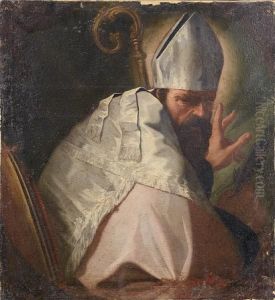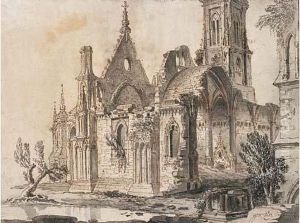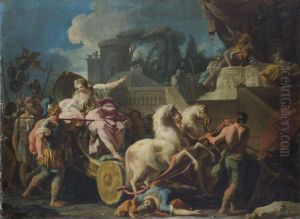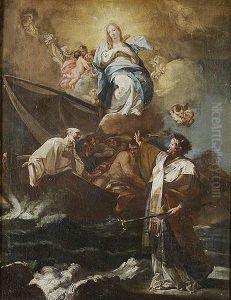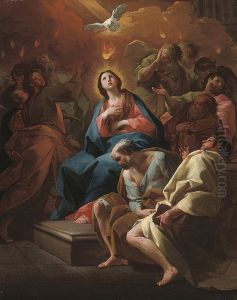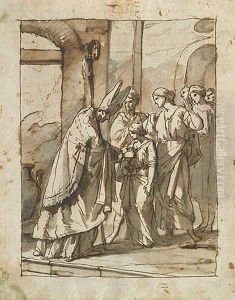Antonio Gonzalez Velasquez Paintings
Antonio González Velázquez was a prominent Spanish painter and fresco artist, born in 1723 in Madrid, Spain. He hailed from an illustrious family of artists, which significantly influenced his early training and career. González Velázquez's father, Pablo González Velázquez, was a respected painter, and his brothers Alejandro and Luis were also accomplished artists. This familial environment steeped in artistic tradition provided him with a rigorous training ground, fostering his development into a masterful painter.
González Velázquez's artistic journey was marked by his early admission to the Royal Academy of Fine Arts of San Fernando, where he not only honed his skills but also absorbed the influences of the Baroque and Rococo styles that were prevalent during his time. His work, however, transcended these influences, incorporating a unique blend of dynamism and delicacy that became characteristic of his style. He was particularly known for his mastery in fresco painting, a technique he applied with great skill in various churches and palaces throughout Spain.
Throughout his career, González Velázquez received numerous commissions from the Spanish royalty and the church, which were testament to his skill and creativity. One of his most notable works includes the frescoes in the Basilica of San Francisco el Grande in Madrid, which are celebrated for their vibrancy and emotional depth. In addition to religious and royal commissions, he also painted mythological scenes and portraits, showcasing his versatility as an artist.
González Velázquez's contributions to Spanish art were not limited to his paintings. He played a significant role in the artistic community as a member of the Royal Academy of Fine Arts of San Fernando, where he later served as a director. His influence extended beyond his lifetime, contributing to the development of neoclassicism in Spain and inspiring future generations of Spanish artists.
Antonio González Velázquez died in 1793 in Madrid, leaving behind a rich legacy that cemented his place as one of the leading figures in 18th-century Spanish art. His works continue to be admired for their beauty, technical prowess, and emotional resonance, embodying the artistic spirit of his era.
